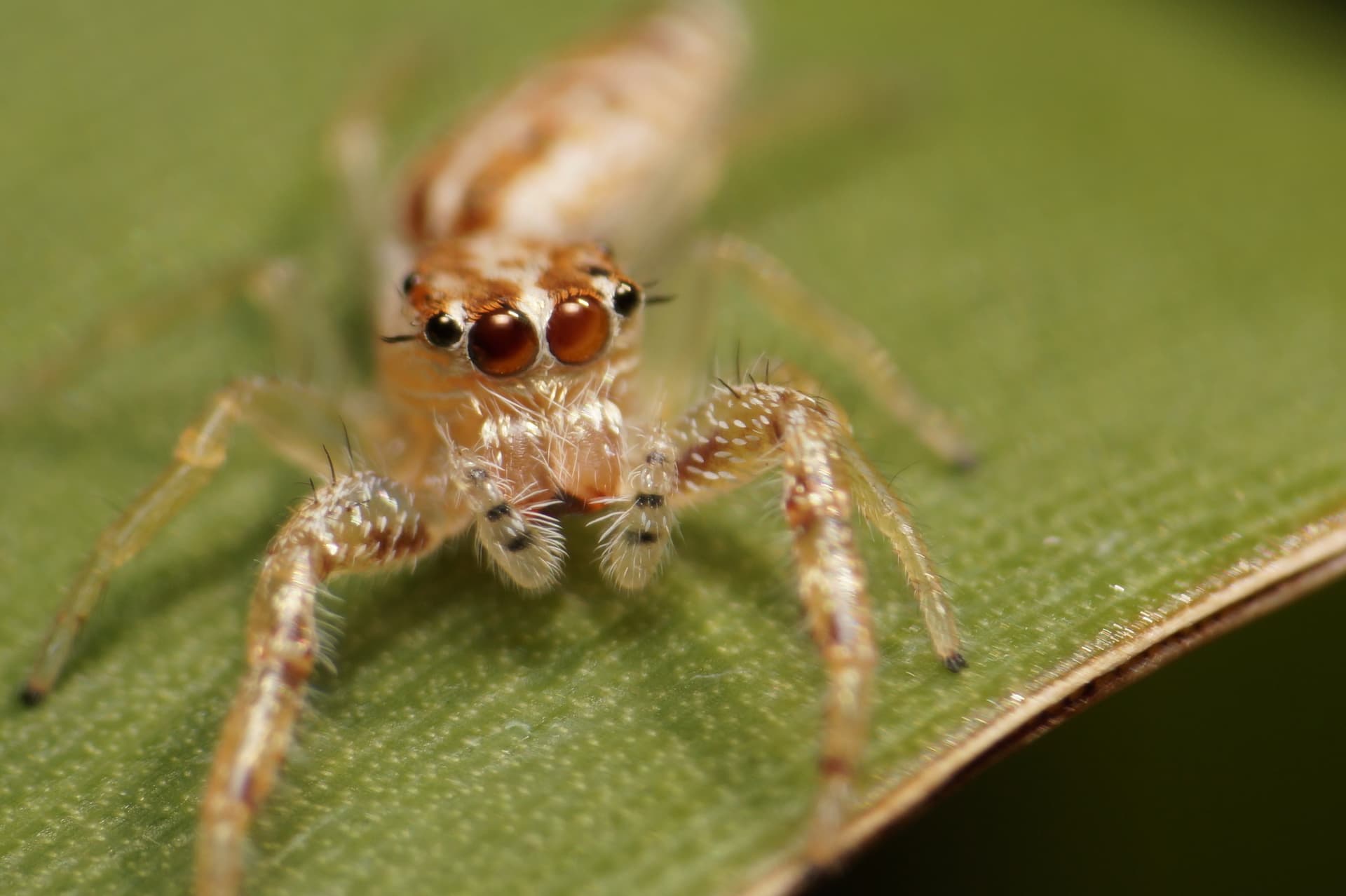This post seems on brand considering iNat’s recent spider theme…
A few days ago my partner found this little spider on the water surface of a rinse tank. I grabbed my camera and was delighted to have it quickly identified, especially since it’s a new species for me:
https://www.inaturalist.org/observations/190329553
It has a distinctive eyesight array with two pairs quite far back and on the top and it got me thinking that this must give it an advantage for hunting or detecting predators while it’s on the surface of water.
This led to me thinking about all the other spiders and their eyesight. I know that good pictures of the eyes can help with identifying and different types of spiders have different eye formations - I believe that jumping spiders have a larger, binocular-like, forward facing pair that help with judging depth.
So I want to start this thread about spider eyes. How the eyes differ between families and what benefits this provides for their particular lifestyles. Share any particularly good observations you have of spiders staring you down. Cool spider visual facts.
Here’s spidery observation I thought was really cool.
On the second photo you can see the eyes have rotated fully around (or covered by a film?) and I have more photos somewhere of the eyes halfway between blue and black. Can this spiders actually see through it’s own body?! https://www.inaturalist.org/observations/110455730
A final thought, how did the spider in the first observation get the common name of Wolf Spider? More confusingly, why is this species in the genus Bear Spiders which is in the family of Wolf Spiders? Why wolves and bears?





